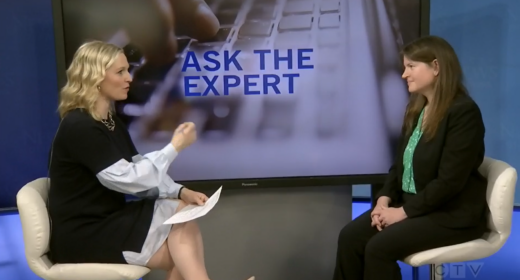In the residential real-estate market, many purchasers erroneously believe that when they obtain a pre-purchase home inspection for a few hundred dollars, they are purchasing an enforceable guarantee that the home is free of any and all defect. When a defect is discovered subsequent to purchase, the home inspector is sued in negligence and breach of contract, with the allegation that the home inspector should have uncovered the defect in the course of inspection.
The success rate of claims against pre-purchase home inspectors remains relatively low, but the volume of claims is causing significant challenges to the home inspection industry. The deductible on insurance policies for home inspectors often equates to the gross income from ten home inspections and one unmeritorious claim can easily negate months of profit.
From a purchaser's perspective, the reasons for including the home inspector in a claim for home defects are self-evident. Vendors are liable for latent defects of which they were aware and did not disclose to the purchaser. The home inspector is liable for patent defects they failed to uncover during the course of inspection. The purchaser and their counsel rationalize that any defect uncovered after closing is either latent or patent. If latent, they deduce that the vendor should be responsible. If patent, the home inspector is negligent or breached the contract. Either way, innocent purchasers believe they will recover damages.
Contrary to this belief, there is a significant gap between the latent defects known to the vendor and patent defects that the home inspector should have identified. Neither a vendor nor a home inspector is liable for a latent defect unknown to the vendor at the time of sale. Purchasers and their counsel often forget or ignore the fact that the gap between latent defects known to the vendor and patent defects apparent to the inspector remains the municipal address of caveat emptor.
Home inspector negligence cases are invariably fact-driven, but the matter of Rayne v. Martin [2006] B.C.J. No. 2040 is an apt example of the many claims by purchasers for defects that fall within the caveat emptor category. The plaintiff purchased a mobile home and later discovered extensive water and structural damage that made it worthless. The vendor testified that she was unaware of the defects, and the defects were not uncovered during the course of inspection. The vendor's evidence was accepted and the court found that furniture and a false ceiling hid the water damage. As a result, the vendor was not liable as she did not know of the defect and the home inspector was not liable as the damage was not readily apparent during a visual home inspection.
The standard of care owed by a home inspector is that of a reasonably prudent home inspector, and these standards are codified in the standards of practice of the profession's regulatory bodies, based on Canadian Association of Home and Property Inspectors standards.
For instance, Brownjohn v. Ramsay [2003] B.C.J. No. 43, held that home inspectors are not required to be experts in pest infestation, and the inspector was not liable for failing to uncover signs of an active termite colony. The pre-purchase residential home inspection is a visual inspection of accessible systems intended to uncover patent defects such as water staining, cracks in foundations, or improper or inadequate insulation that may be indications of serious deficiencies.
Home inspectors are specifically instructed not to undertake "destructive" or "invasive" inspections, as there is a risk that the inspection itself could cause property damage for which the inspector would be liable. In Li v. Baker Street Home Inspection Services Inc. [2005] O.J. No. 3846, the court held that a home inspector was not required to open an attic hatch that was painted shut; to do so would cause damage to the vendor's premises. He was therefore not liable for failing to uncover cracking and splintering roof joists that were readily observable had the attic been accessed. In Martin and Brownjohn this meant that the home inspector was not required to move furniture, roof panels, cabinets or baseboards as part of an inspection.
As a result of the increased number of suits against home inspectors, inspection reports now normally contain robust limitation of liability clauses, descriptions of the purpose and scope of the prepurchase home inspection, and lists of systems explicitly not covered by the home inspection. Too frequently home inspectors fail to insist that the purchaser read these portions of the agreement prior to the inspection, only to have a judge rule them unenforceable as a result. In Brownjohn, the exclusion clauses were rescinded because the inspector did not draw the purchaser's attention to these clauses, whereas in Martin the home inspector ensured that the purchaser read the inspection agreement and was able to rely on its contents. Home inspectors should ensure that the purchaser reads the agreement prior to proceeding with the inspection. The standard form agreement of purchase and sale was intended to reduce the number of purchaser's claims by limiting vendors' liability for subsequently discovered defects to latent defects of which the vendor was aware and failed to notify the purchaser in the declarations portion of the form, and by stipulating that the form supercedes any oral warranties or guarantees.
The form therefore provides purchasers the opportunity to obtain a home inspection to their satisfaction prior to purchasing a residential property. This is intended to allow the purchaser to satisfy him or herself of the residence's condition prior to purchase and to obviate the need to rely on the vendor's statements. The result has not been a reduction in claims but rather to add the home inspector to the list of defendants. Purchasers think of home inspection services as an insurance policy, but as often occurs with the insurance policy they don't read the limitations and exclusions clauses until it's too late. As in Martin, Brownjohn, Li and in a myriad of others, purchasers must be mindful that the principle of caveat emptor still has a role to play in residential real estate.
Craig O'Brien is an associate with Nelligan O'Brien Payne LLP in Ottawa and practices in the areas of insurance defence, personal injury and civil litigation.
[This article is reprinted with permission and first appeared in the August 2007 issue of The Lawyers Weekly.]



